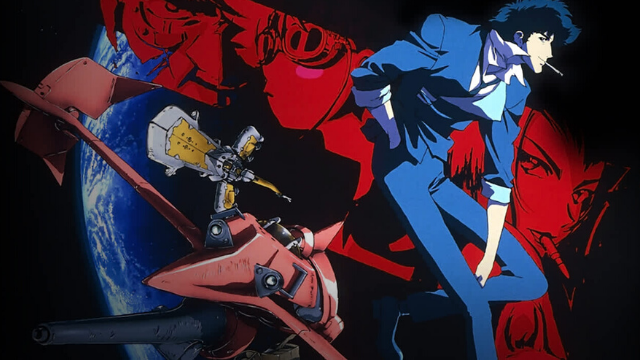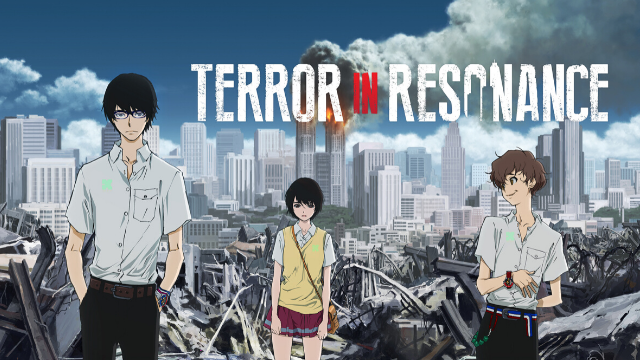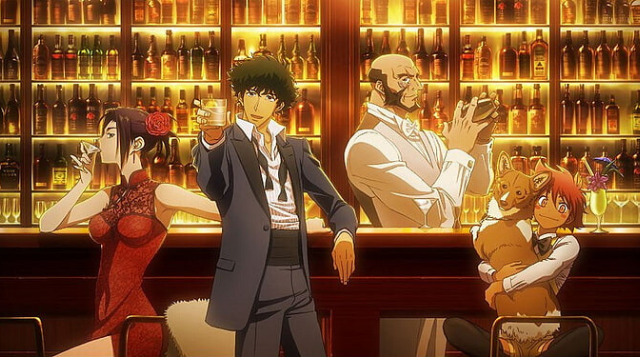
Today we wish a very happy birthday to the Cowboy Bebop director, the one and only Shinichiro Watanabe! Watanabe-san has been a powerhouse in the world of anime for well over two decades, working with acclaimed studios such as Sunrise Inc., Studio Nue, and BONES. His mastery at blending Western and Eastern elements has earned Watanabe a devoted fanbase in many different countries. One of the most consistent aspects of Watanabe's catalog is his skill at successfully amalgamating a variety of genres from sci-fi to Westerns to comedy and more.
In honor of Watanabe's birthday, I'll be exploring the artistic depth of three anime from his impressive oeuvre and celebrating the very special spark that can be found in all his works. Read on for more!
Terror in Resonance (2014)
Terror in Resonance seems critically underappreciated when compared to some of Watanabe's other directorial efforts. Though it lacks the robust character development and sense of immersion found in his other titles, the series still retains many of the qualities that make Watanabe such a globally respected anime auteur.
Terror in Resonance follows two high-school-aged terrorists named Twelve and Nine as they plot a series of bombings in order to reveal the injustices enacted against them — and many other children — during a secret government operation called the Athena Plan. Along the way, a lonely girl named Lisa finds herself enwrapped in the boys' mission, and experiences camaraderie for the first time due to their presence.
The show's basic premise alone reflects Watanabe's willingness to explore uncommon thematic spaces by featuring literal terrorists as two of the main characters. Common in his other works as well, Watanabe invites viewers to feel compassion for characters who inhabit the outermost margins of societal acceptability. The show doesn't endorse Twelve and Nine's actions, but it does position them as isolated characters with real human attributes, acting coherently in retaliation to the incorrigible exploitation they faced as children. Twelve and Nine also make extreme efforts to make sure no one is killed due to their bombings, which serves as an empathetic deviation from standard depictions of terrorists as one-sided, monstrous caricatures.
Ultimately, Terror in Resonance features many trademarks of Watanabe's unique touch: compassionate explorations of loneliness, a tragic narrative interspersed with brief moments of beauty, and yet another gorgeous soundtrack by Yoko Kanno (a frequent collaborator with Watanabe).
Macross Plus (1995)
Watanabe made his directorial debut as co-director for Macross Plus working alongside Shoji Kawamori (the creator of the original Macross). This four-part OVA is the best flying mech, artifcial-intelligence-pop-music-gone-horribly-wrong redo of Top Gun I've ever seen. I remember I first saw it on the Starz Channel back in 2002 or 2003. It was fun to revisit the US dub recently with the fresh realization that Bryan Cranston — aka Walter White, our favorite fictional suburban meth dealer — did the voice acting for the main character Isamu. Isamu is like a more womanizing Spike from Cowboy Bebop, mixed with the arrogance of Mugen from Samurai Champloo, and is an early example of a recurrent protagonist-archetype in Watanabe's titles. The playful comedic qualities Watanabe would become known for were already apparent in much of Macross Plus, such as the scene when Isamu and his rival Bowman bring up old adolescent/high-school gripes while they're both engaged in an airborne mech-duel to the death.
Once again, Yoko Kanno's absolutely incredible score must be mentioned. The soundtrack ranges from orchestral music perfect for dogfights to emotional ballads and '90s trance (there's also a really cool reference to the Aphex Twin album "Selected Ambient Works 85-92" on a bus sign in one scene). Watanabe's first directorial outing already grapples with a subject near and dear to his heart: music. The last episode features an intense sequence involving an AI popstar named Sharon Apple, who takes control of everyone viewing her concert via seductive musical mind control. This scene explores a what-if scenario: an imagined future where technology meshes with the power of music for nefarious — rather than healing — ends.
Either way, since Watanabe is a self-proclaimed "music freak," it's fun to watch him implement a plot device about just how disruptively powerful music can be (his most recent anime Carole and Tuesday tackles AI and pop music with a more neutral lens, as an FYI). Macross Plus is not to be missed.
Cowboy Bebop (1998)
I'll never forget what it was like to experience Cowboy Bebop for the very first time when it initially aired on Adult Swim in 2001. I must have been 12 or 13 at the time, and few pieces of media have made such a lasting impression on me. I was already extremely impressed even after seeing the first episode "Asteroid Blues," but it's the fifth episode entitled "Ballad of Fallen Angels" — where viewers are introduced for the first time to the central antagonist Vicious — that completely sold me on the series.
"Ballad of Fallen Angels" culminates in a climactic battle that takes place in a church, with the main character Spike duking it out against Vicious and his goons. The most memorable moment for me is the scene when Spike is thrown out of the top of the church by Vicious. Spike falls in slow-motion as viewers are treated to a montage of his tragic crime syndicate past and his relationship with his lost love Julia. It's such a stunning moment that perfectly echoes the old creative writing adage "show don't tell," since it subtly expresses so much about Spike's life without explicitly battering it over your head. The scene speaks volumes in just a few wordless seconds, with no sounds to be heard at all other than Yoko Kanno's gorgeous choir and piano-based track "Green Bird." I've drifted toward arthouse movies as I've grown older, and I truly think the aforementioned scene was my first time experiencing the ineffable artfulness that I find in the experimental films that move me most. It feels a little silly and overblown to say, but the sequence feels like it contains a large spectrum of life — love, hate, sadness, memories, dreams, etc.
Cowboy Bebop is a show that abounds with moments like this. There are so many moving scenes rich in an atmospheric tenderness that aches with longing, loneliness, and beauty. Intimate scenes where characters in interstellar ships stare quietly at a sea of stars. A view of someone smoking a cigarette alone in a dimly lit alleyway. Or something like the ending of "Waltz for Venus," when a music box-esque song plays while Spike gazes into the sky as spores that can blind drift downward like snow.
I could go on and on about the series — the masterful quality of Keiko Nobumoto's screenplay, the riveting action sequences and lovable characters, the expert blend of genres coupled with breathtaking animation and music, and how Spike's somewhat Buddhist philosophy (whatever happens, happens) influenced my own. Cowboy Bebop truly deserves all the praise and is undoubtedly one of the best animated works of all time.
So here's to you Shinichiro Watanabe. I hope you have a birthday as stunning and cool as the anime you've graced the world with.
What else do you love by Shinichiro Watanabe, and why? Sounds off in the comments below!
Do you love anime? Do you love writing? If you have an idea for a features story, pitch it to Crunchyroll Features!
Source: Latest in Anime News by Crunchyroll!



Comments
Post a Comment